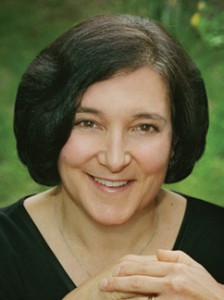This post is by Autism College’s first guest blogger, Kerry Magro, who was diagnosed with PDD-NOS at age four. Now as an adult who has autism, he is a recent graduate of Seton Hall University’s prestigious Leadership Development Honors program, majoring in Sports Management. In 2008 as a college sophomore he started the first Student Disability Awareness club in Seton Hall’s history to help spread awareness and raise funds for those affected by autism and other disabilities.*
Here’s the scenario: You’re a college freshman. You’re on your way to THE higher learning experience of a life time. There is a catch though. As an individual with autism going into college you are in a distinct unknown class which is both good and bad. If you look at some websites today you may see how many people go to college from a certain race/demographic. With a learning disability though, especially autism, we don’t know the numbers of who’s going to college today and who’s not. What we do know is that an estimated 500,000 people with autism will become adults within the next decade. This means that your story, through your college experience, can inspire so many.
With so much still unknown it means that many people are still unaware of autism at the college level. Granted some programs know what they are doing, many still have a very long way to go. I can tell you though my life has changed so much because of my college experience with autism. When I was 4, I was diagnosed with pervasive developmental disorder- not otherwise specified (PPD-NOS). Almost 18 years later I made my dreams come true by receiving a diploma from Seton Hall University. I went through so many challenges to get there but because I faced those challenges I’ve become a stronger individual by far. Because of the uncertainty, it’s how you prepare now which will ultimately be all the difference in your college experience.
So where do you start? Many of the steps are very basic and most of them involve just one word which awareness. The steps that I tell people through a few blogs I’ve wrote is broken down into these…
- Making sure you understand who the faculty members are for your program (director, disability specialist, etc.)
- Understanding what accommodations they offer (extended time on tests, private rooms for exam periods, individual note-takers, etc.)
- Finding out if there is a disability support student organization (important in regards to making sure students have a “voice” and community that can promote acceptance and diversity).
Ideally these steps will put you ahead of the game. Still you will need to have a strategy for how to assess your Individualized Education Program (IEP) in College. I was the unfortunate soul who realized 2 weeks within college that I no longer would have an IEP. No one ever told me that my IEP would be stripped away, even during my exit interview. As I know this is August you can’t just go back to High School and do this but I would take any and all notes you have from your exit interview from High School and assess where you are as a whole. Find out what your strengths and weaknesses are and then after you figured that out what accommodations they offer (step 2 above). I would suggest doing all of these steps with a parent/guardian as well to make sure you don’t miss anything while going through the trials.
Other Mentions I usually tell people are:
- Prepare to self-advocate. Many schools will make you sign a paper before they let parent involvement happen and even then they push independency.
- Figure out whether you would feel comfortable living in a college dormitory. With proper documentation, you can ask for a single room to make your transition easier!
- Speed Reading Courses (many are available at college institutions for students of all ages around the U.S.! You can also look for online video instructions, such as the one here)
- Asking for a learning buddy (an upcoming sophomore to help show you the ropes)
- Maintaining healthy reading and exercise habits (30 minutes a day for each) to keep the mind sharp in the summer
- Reaching out to local and national autism-related organizations (such as the Autism Society and Autism Speaks) to talk with experts in regards to self-help and support groups.
- Buy a SMARTPEN!
Finally, my last word of advice is to have fun! Many people say college is the best time of your life and it really can be if you let it. Remember, autism can’t define you, only you can define autism. At the same time PLEASE remember to give back. As I said, you’re voice is the key to our autism movement. So many famous people with autism today are much older and to promote forward progress we need new generals and new voices to come to the front and join in. Because Autism in college is still unknown a college education could very well be that first step…
* If you would like to contact Kerry directly about questions/comments related to this post, he can be reached at his Facebook Fan Page or at kerrymagro@gmail.com. Please feel free to read his other college post which references some of his work in this post from The Autism Society of America here (scroll down the page) along with his Autism Speaks college blogs here.

